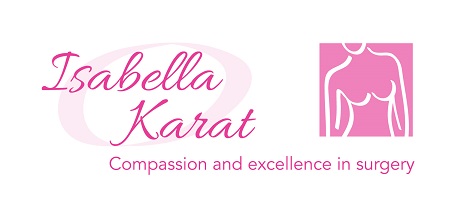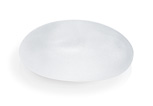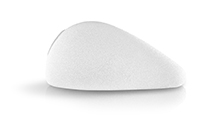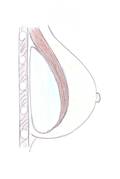Introduction
Breast augmentation (also called breast enlargement or enhancement) is an established surgical technique that is proven to improve a woman’s body image and perception of self. Click here for more information on breast augmentation.
Who chooses to have breast augmentation?
This operation is requested by women who feel they have small breasts in proportion to their frame, women who have found that their breasts have decreased in size or become less “full” after having children and women who desire correction of a size or shape difference between the breasts. MHRA guidance for women considering breast implants can be downloaded here. Click here for information on a rare cancer that has been associated with breast implants called anaplastic large cell lymphoma (ALCL).
Preoperative evaluation
You will be seen in the clinic and various questions asked concerning your approach to breast enlargement. You will be asked why you wish your breasts to be enlarged and what size you would like them to be.
It is unrealistic to give an exact estimation of cup size following surgery but a general opinion can be given. It is important to achieve a balance between what the woman wants and what is advisable surgically and we should be able to agree on an implant size before your operation. Sometimes it is the shape, or droopiness of the breast that is the real problem, rather than the size, and in this case I would discuss alternative or additional treatments for you if these are more appropriate than enlargement alone.
A physical examination will be performed. This should include a breast examination to check for lumps and other abnormalities. Measurements will be taken to help determine the correct implant size and to identify any asymmetry between the breasts. Any asymmetry of the chest or back is also noted as this will need to be taken into account and can affect the final results. Any differences that cannot be corrected by surgery will be pointed out to you, as these will sometimes seem more obvious after the operation. You should remember that augmentation alone cannot correct some appearances, such as nipples that point outwards, or breasts that naturally sit low on the chest wall.
Specific considerations
Implant shape
There are different shaped implants available and I will discuss with you which is best for you, given your current shape and size, and your desired result. A round implant will give a fuller appearance in the upper part of the breast while an anatomically designed implant will give a more natural shape and can help to reduce droop.
A round implant
An anatomically shaped implant
Implant type
There are both saline filled and silicone gel filled implants available. There is no evidence that silicon is harmful or can cause disease outside the breast, and most modern implants have an outer silicone shell even if they are filled with saline. Many implants are now made of “cohesive” silicone gel. While this feels soft, it has a structure like a jelly cube, so cannot leak out into the breast tissues as easily as the older liquid silicone implants.
Implant Size
The correct implant size depends on a combination of factors – your desired size after surgery, the size of your chest, whether your breast sit high up or lower down on your chest and your degree of ptosis. It is usually helpful if you can bring some pictures of women who have the sort of proportions and shape you wish to achieve, so we can agree on your aims. There is also a very useful technique you can use at home to try and work out how much larger you want to be.
Silicone shell sizers
During your consultation you will have the opportunity to see an approximation of your final result with the use of silicone shell sizers. You may find it useful to bring a non padded bra in your desired cup size to these consultations for this purpose.
Positioning of the implant
The implant can be placed directly under the breast in a subglandular position or under the muscle of chest wall, the subpectoral position. A technique known as the “dual-plane” can be used which combines the two, and may help correct ptosis while at the same time increasing tissue coverage over the upper part of the implant. Every woman obviously represents an individual case and we will discuss the various advantages and disadvantages of each approach for you personally.
Submuscular pocket
Subglandular pocket
The Operation
The operation is normally performed under a general anaesthetic. Various approaches are available for the placement of the implant. The commonest approach is by placing the scars underneath the breast in the breast crease. This is generally considered the one required for the placement of silicone gel implants as they do not compress enough to be squeezed through holes in either the armpit or around the nipple. The stitches used are dissolvable. The operation takes 1-2 hours and you will probably stay one night in hospital.
Following the procedure the wounds will be dressed with surgical glue and paper strips. This will allow you to shower and bath in the post-operative period as normal and should just need to be patted dry. Antibiotics are given during and sometimes after the operation to prevent infection.
Returning Home
You are likely to feel some discomfort for the first few weeks and you should avoid any heavy lifting or strenuous activity for 3-4 weeks. You should be able to drive after 2 weeks and most women can return to work by this time. You will be advised to wear a sports type bra (ideally front-fastening) for the first few weeks. You will be reviewed in clinic 2-3 weeks after the procedure




